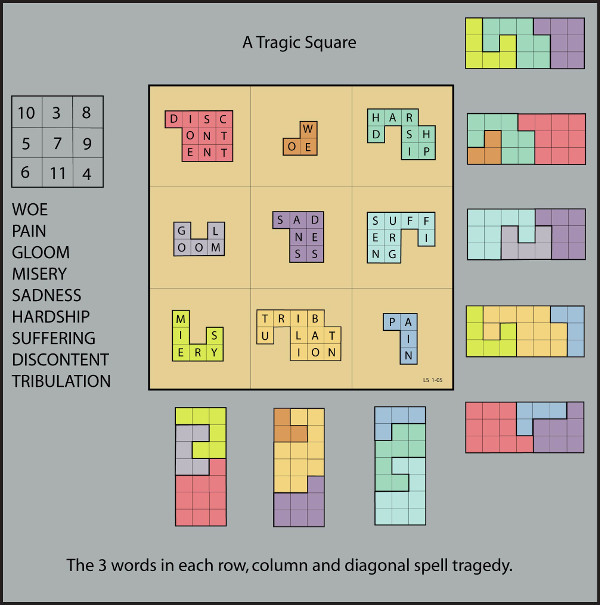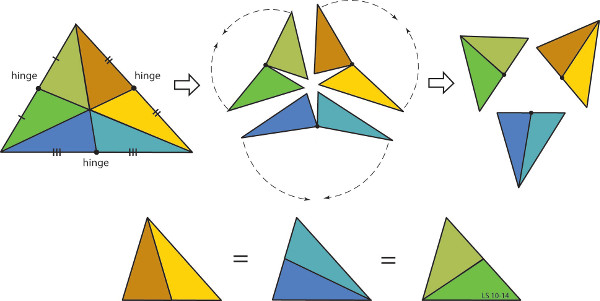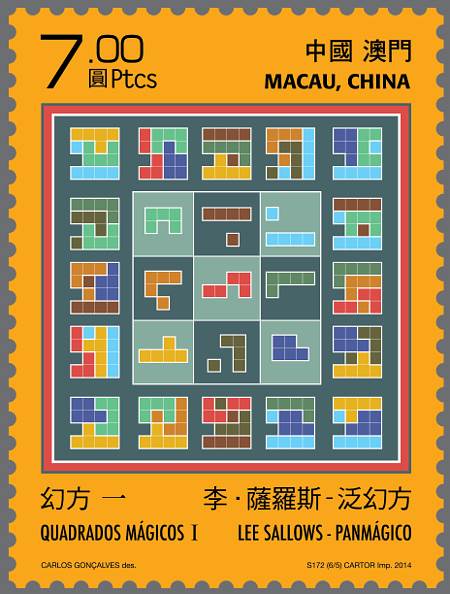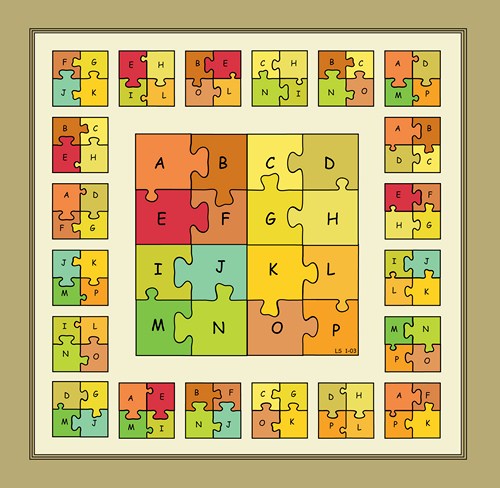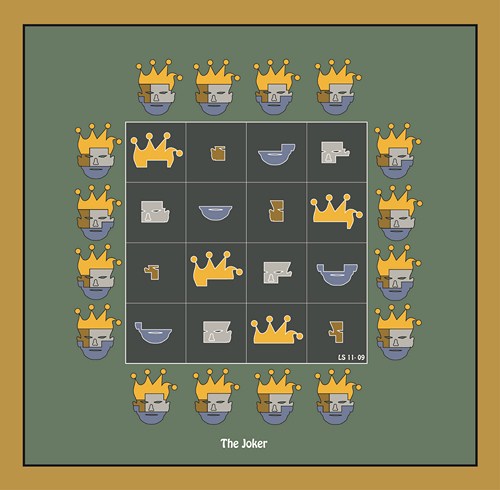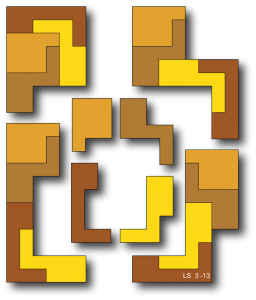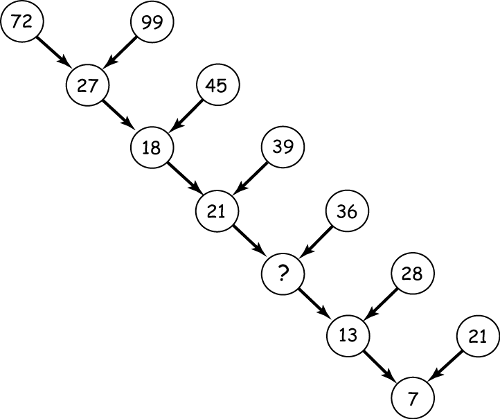A self-reproducing sentence by Lee Sallows — “Doing what it tells you to do yields a replica of itself”:
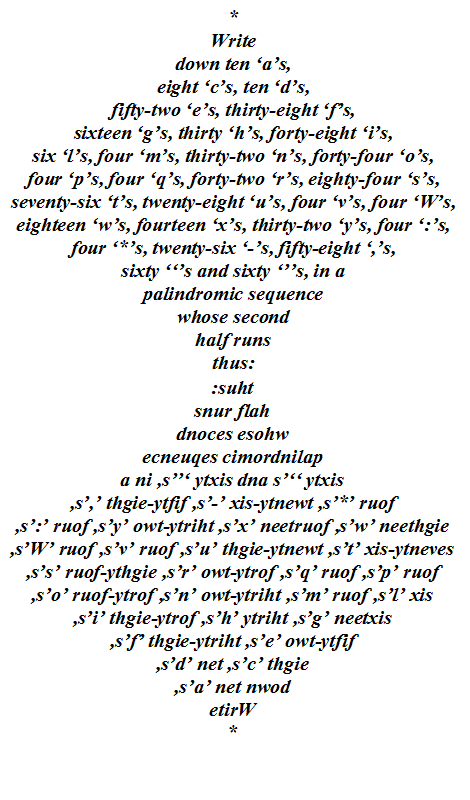
This reminds me of a short short story by Fredric Brown:
THE END
Professor Jones had been working on time theory for many years.
“And I have found the key equation,” he told his daughter one day. “Time is a field. This machine I have made can manipulate, even reverse, that field.”
Pushing a button as he spoke, he said, “This should make time run backward run time make should this,” said he, spoke he as button a pushing.
“Field that, reverse even, manipulate can made have I machine this. Field a is time.” Day one daughter his told he, “Equation key the found have I and.”
Years many for theory time on working been had Jones Professor.
END THE
